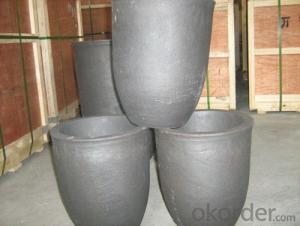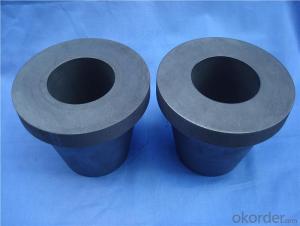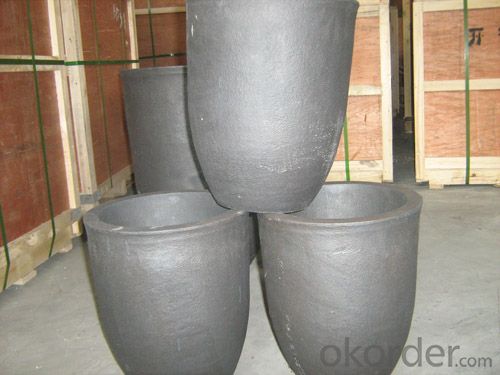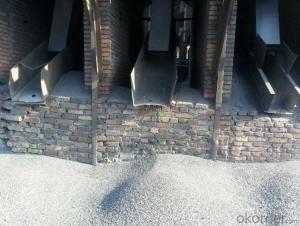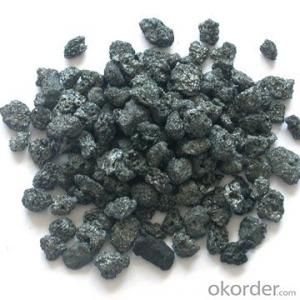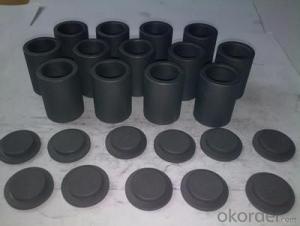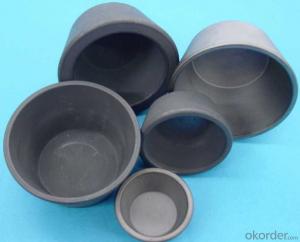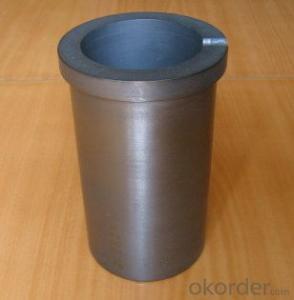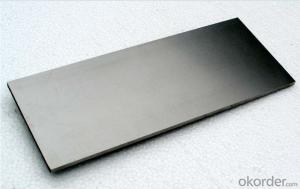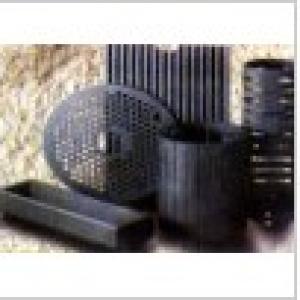Graphite Crucibles Wholesell/High Strengh CNBM
- Loading Port:
- Tianjin
- Payment Terms:
- TT OR LC
- Min Order Qty:
- 0 m.t.
- Supply Capability:
- 10000 m.t./month
OKorder Service Pledge
OKorder Financial Service
You Might Also Like
Features
1.Long working lifetime: its working lifetime is increased 3-5 times over normal clay-crucible due to the compact body formed under high pressure.
2.High thermal conductivity: highdensity body and low apparent porosity greatly improve its heat conductivity.
3.Newstyle materials: new heat conduction material ensures faster heat conductivity and pollution-free product, reduces adherent slag.
4.Resistance to corrosion:better anti-corrosion than normal clay-crucible.
5.Resistance to oxidation: advanced process dramatically improves its oxidation resistance, which ensures persistent heat conductivity and long working lifetime.
6.High-strength: high-density body and logical structure make the product better compression property.
7.Eco-friendly: energy-efficient and pollution-free, not only ensure metal product purity, but also ensure sustainable development on environment.
8.Multi-function: Can be used in induction graphite crucible furnace
Specification
Bulk Density | g/cc | 1.70-1.88 |
Specific Resistance | μΩ.m | 6.0-15.0 |
Compressive Strength | MPa | 30-80 |
Bending Strength | MPa | 20-45 |
Shore hardness | 30-70 | |
C.T.E.(100-600°C) | x10-6 /°C | 2.5-5.5 |
Ash | % | 0.01-0.2 |
Maximum Grain Size | mm | 0.044-0 |
Product Uses
1. Graphite crucible cannot be exposed in moisture, and must be placed in indoor dry place or wooden shelf. Maintain ventilated. Moisture is strictly prohibited. Damped crucible is likely to crack.
2. Each crucible, especially damped ones, must be preheated and roasted in drying equipment or next to a ground furnace before use. The roasting temperature should start from a low temperature of 100°C below. Roast it to 150°C at a speed of not higher than 30°C per hour. Preserve the heat for about 8 hours and then dry it. The crucible dried next to a ground furnace should be placed at least for one shift, and often turned to change direction, till workers feel the internal wall of crucible is hot.
3. The melting time for the first time should be at least twice of the normal melting time, in order to avoid cracking inside the crucible due to heating up too fast, or even cracking immediately when the fire sets on.
4. Handle with care. Falling or shaking is strictly forbidden in order to present cracking. Crucible should be placed below the mouth of furnace to prevent the furnace lid abrading the upper edge of the crucible and thus affecting the capacity.
5. Pour out the remaining cold metals inside the crucible after use, and then add new materials. Carefully and gently add new materials into the crucible. Feed materials according to the capacity of crucible. It is not allowed to feed too many materials, in order to prevent crucible from swelling or bursting.
6. Knock gently to remove slags and cokes on the internal and external wall of the crucible. Avoid damaging the crucible body.
7. In the melting process, do not add chloride solvents in order not to corrode the crucible. For the furnace that uses oil and coal gas as fuels, the oil wind should not reach one part of the crucible directly. Turn around the crucible from time to time, in order to avoid local damage.
8. Clamps and other discharging tools should comply with the shape of the crucible. During furnace discharging, remove the cokes on the external wall of the crucible, and lower the furnace temperature; do not discharge at high temperature after stopping blasting. Clamp the upper and middle parts instead of the top of the crucible in order not to damage the crucible. Graphite crucible is used mainly to melt gold, silver and other precious metals.
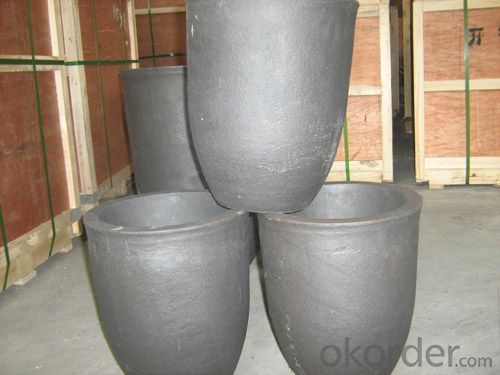
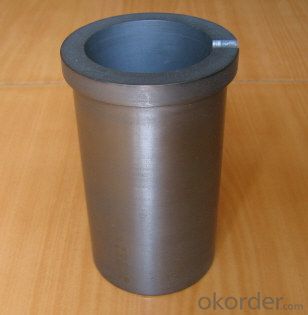
- Q: How does carbon dating work?
- The age of organic materials, such as plants, animals, and human remains, can be determined through the scientific technique known as carbon dating. This method relies on the continuous formation of carbon-14, a radioactive isotope of carbon, in the atmosphere due to cosmic rays. Carbon-14 is absorbed by living organisms through photosynthesis or consumption. The ratio of carbon-14 to stable carbon isotopes (carbon-12 and carbon-13) in the atmosphere remains relatively constant as living organisms maintain equilibrium by exchanging carbon-14 with the atmosphere through respiration or consumption. However, when an organism dies, it no longer takes in carbon-14, leading to the decay of existing carbon-14 at a predictable rate. Carbon-14 has a half-life of approximately 5,730 years, meaning that after this period, half of the carbon-14 in a sample will have transformed into nitrogen-14. By measuring the remaining carbon-14 in a sample, scientists can calculate the time that has passed since the organism's death. The carbon dating process involves several steps. Initially, a sample is collected from the organic material to be dated, which can include wood, bones, or textiles. The sample is then prepared for analysis by eliminating any impurities and converting it into a suitable form for measurement. Subsequently, the sample is exposed to a high-energy radiation source, such as a particle accelerator or a nuclear reactor. This exposure causes the carbon atoms in the sample to emit beta particles, which are small bursts of energy. These particles are detected and measured using sensitive instruments, enabling scientists to determine the remaining amount of carbon-14 in the sample. Finally, this information is utilized to calculate the age of the organic material. By comparing the ratio of carbon-14 to carbon-12 in the sample to the known ratio in the atmosphere, scientists can estimate the elapsed time since the organism's death. Carbon dating is an invaluable tool for archaeologists, paleontologists, and geologists. It allows for the accurate determination of the ages of ancient artifacts, fossils, and geological formations. This technique has revolutionized our understanding of human history and the natural world, providing us with invaluable insights into the past.
- Q: Why vegetarianism can reduce carbon emissions?
- But the calculations are complicated, but the reason for vegetarianism to reduce carbon emissions is simple;If people eat carnivorous, then this meat must eat vegetarian food can be transformed, but the conversion efficiency is not 100%, so when the animal meat vegetarian, it will waste some energy, but also have a CO2,
- Q: What is the structure of carbon-based polymers?
- The structure of carbon-based polymers involves long chains or networks of carbon atoms linked together by covalent bonds, forming the backbone of the polymer. These carbon atoms are typically bonded to other atoms such as hydrogen, oxygen, nitrogen, or halogens, which contribute to the overall properties and functionality of the polymer. The repeating units, or monomers, are connected through chemical reactions known as polymerization, resulting in a diverse range of structures and properties in carbon-based polymers.
- Q: Last night to go to the supermarket to buy 5 batteries, see Toshiba carbon batteries, I finally bought the super alkaline batteries, alkaline batteries and carbon is the difference in where? What kind of battery is best for digital cameras? Thank you
- Alkaline capacity, not drip waterThe camera needs to be chargedBuy expensive at the supermarket
- Q: How does deforestation contribute to carbon emissions?
- Deforestation plays a significant role in contributing to carbon emissions. When forests are cleared or burned down, the carbon stored in trees and vegetation is released into the atmosphere in the form of carbon dioxide (CO2), a greenhouse gas that contributes to global warming. Forests act as natural carbon sinks, absorbing CO2 from the atmosphere through the process of photosynthesis. Trees and plants convert CO2 into oxygen and store the carbon in their trunks, branches, leaves, and roots. This process helps to regulate the Earth's climate by reducing the concentration of CO2 in the atmosphere. However, when forests are deforested, this natural carbon storage system is disrupted. The carbon that was once stored in trees and vegetation is released back into the atmosphere, increasing the concentration of CO2. This process is further exacerbated when forests are burned, as the combustion of trees and plant material releases even larger amounts of carbon. The loss of forests also leads to a decrease in biodiversity and the destruction of habitats for numerous species, which in turn disrupts the delicate balance of ecosystems. As these ecosystems are disrupted, they become less efficient at absorbing and storing carbon, further contributing to increased carbon emissions. Moreover, deforestation contributes to carbon emissions indirectly through several other means. For instance, when trees are cleared, the soil beneath becomes exposed to sunlight and heat, causing it to dry and release stored carbon. Additionally, deforestation often leads to the conversion of land for agricultural purposes, such as livestock farming or palm oil plantations, which can result in increased methane emissions, another potent greenhouse gas. In summary, deforestation contributes to carbon emissions by releasing the stored carbon in trees and vegetation, disrupting the natural carbon storage system, and indirectly contributing to the release of other greenhouse gases. It is crucial to address deforestation and promote sustainable land management practices to mitigate the effects of climate change and reduce carbon emissions.
- Q: What are the applications of carbon nanowires?
- Carbon nanowires have numerous applications in various fields. They are used in electronics for creating high-performance transistors, sensors, and conductive electrodes. Their exceptional mechanical properties make them suitable for reinforcement materials in composites, such as lightweight and strong materials for aerospace and automotive industries. Carbon nanowires also find applications in energy storage devices like batteries and supercapacitors, as well as in biomedical engineering for drug delivery systems and tissue engineering scaffolds.
- Q: What is carbon capture and storage?
- Carbon capture and storage (CCS) is a process that involves capturing carbon dioxide emissions from industrial sources, such as power plants, and storing them underground or using them for various purposes. It aims to mitigate the release of greenhouse gases into the atmosphere, helping to combat climate change by reducing carbon dioxide levels.
- Q: Is carbon a solid, liquid, or gas at room temperature?
- At room temperature, carbon exists as a solid.
- Q: Made of high strength structural partsThe market quality of the carbon fiber plate is too much, the price is low, do not know how to choose. A knowledgeable friend can introduce larger enterprises? The quality of the carbon fiber board produced must be better and the performance should be stable!
- You are not for the prestressing bar, if you find the building reinforcement for Tianjin Beijing card, if you do the structure reinforcement for Jiangsu and Wuxi via the new material industry, these are relatively well-known.
- Q: How can Dungeon Fighter Online's superior furnace rock carbon be obtained?
- DNF advanced furnace carbon can acquire rock at the mall, priced at 450 points and 50 points 10 coupon coupon 1.The role is to use advanced furnace rock carbon can start at the Kylie advanced equipment reinforcement machine, strengthen the probability of success is greater!Point Keri election advanced strengthening, plus ten or more equipment to strengthen, the probability is 10% more than ordinary furnace carbon
Send your message to us
Graphite Crucibles Wholesell/High Strengh CNBM
- Loading Port:
- Tianjin
- Payment Terms:
- TT OR LC
- Min Order Qty:
- 0 m.t.
- Supply Capability:
- 10000 m.t./month
OKorder Service Pledge
OKorder Financial Service
Similar products
Hot products
Hot Searches
